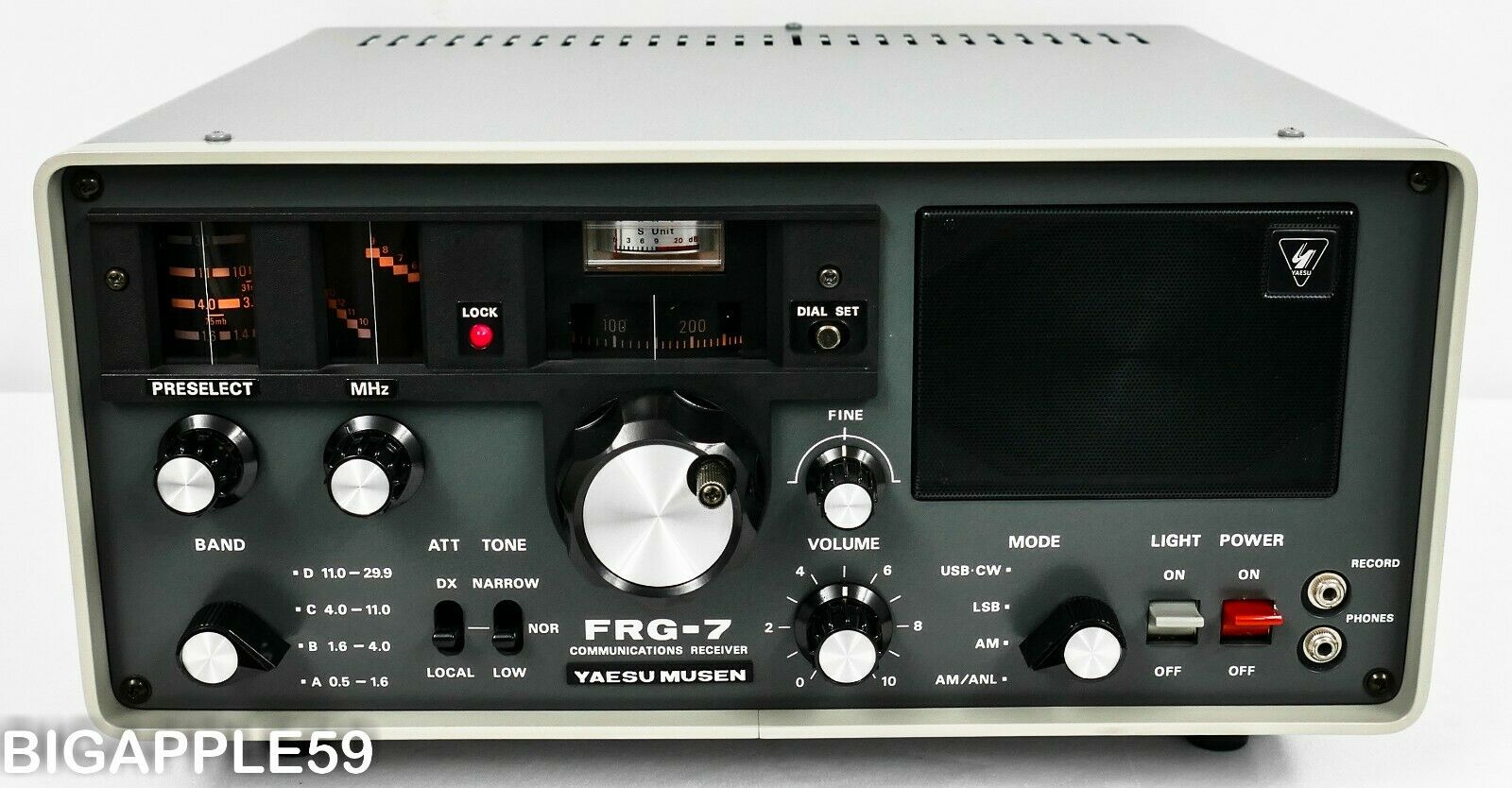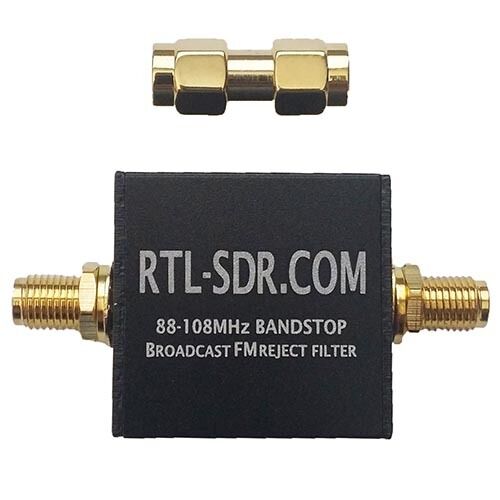-40%
Yaesu FRG-7 Shortwave Ham Radio Shortwave Receiver ***CLASSIC SIGNAL SNIPER***
$ 316.77
- Description
- Size Guide
Description
In the early 80's Yaesu manufactured this famous receiver which has been used by shortwave listeners and amateur radio enthusiasts alike for over 4 decades. Most often, these FRG-7's have a variety of cosmetic issues as they were a reliable workhorse. Thus, it is common to see a variety of marks on the receiver and it is a challenge to locate a receiver that is missing these marks and signs of age and heavy use. This receiver is one of the nicer examples of the FRG-7 to pass through our hands and the selling price is commensurate with cosmetic condition. Pamela detail cleans each receiver that passes through our hands and she told me that this may be the nicest FRG-7 that she has ever seen and we have sold about 155 of these FRG-7 receivers here on Ebay. The only thing that we noticed was a couple of specks of dust beneath the dial lens, and if this bothers you, then the cover can be removed by loosening 9 screws to blow this dust away. Please look closely at our pictures to see specifics on cosmetic detail.The FRG-7 is not scarce and you may find these pop up regularly on Ebay at various prices. Many of those are not operating properly and have issues such as burned out lamps, non-functioning modes, or loss of sensitivity. If you purchase an FRG-7 from many sellers, there is a good chance that it is not operating as it should and will require attention so that it performs as designed.
When we tested this FRG-7 and found that it worked perfectly with no issues or shortcomings. This is unusual as most FRG-7's that pass through our hands have some sort of issue from low sensitivity, burned out lamps, or noisy pots and switches. But not this receiver. Please note that if you purchase an FRG-7 on Ebay and it has not been fully tested (and serviced) that there is a very good chance that you will be disappointed in the FRG-7's legendary operation.
This FRG-7 comes with:
* copy of the user manual
* copy of the sale brochure
* FRG-7 promotional info - Yaesu catalog 1978
* Radio West catalog sales page copy 1983
* Gilfer shortwave sales page copy 1982
* Practical Wireless review 1979
* WRTH (World Radio & Television Handbook) review 1978
* WRTH review 1980
* In addition, we are including a PDF copy of the manual on CD along with service notes to keep this receiver operating at its peak for many years to come. The CD has a wealth of files (469MB) containing information about mods and specific improvements or operation notes concerning the FRG-7 receiver. In addition, there is general shortwave listening information, antenna information, and other notes relevant to this hobby. This CD is not for sale and is intended to accompany this receiver into the hands of the new owner.
There is an input jack on the rear of the receiver to operate the radio off of a DC supply or car battery. In addition, the receiver has an onboard battery tray to hold 8 D cell batteries to allow the receiver to operate for weeks on a set of these batteries. The nice thing to know is that this receiver is thrifty on DC consumption and the designers of the radio allow for the dial lamps to be turned off to further conserve energy. With the front panel lamps turned off, the radio draws about 3 watts of current. Due to the versatility in being able to operate off of DC current (like from a car battery) and since it is thrifty on that sort of DC power supply, this unit is ideal for the emergency prepper who wants to have a stalwart communications receiver for emergency use.
For those of you who are not familiar, let us tell you what makes this receiver so special. The circuitry was developed by Dr. Trevor Wadley and later employed by Yaesu in this FRG-7. The shortwave receivers of the day were not very stable and typically there was a certain amount of drift when tuned in to a station. You can imagine how annoying or even frustrating this can be to have to retune the circuit from time to time, especially on military frequencies or weak signals. As a result, Dr. Wadley invented a drift cancelling loop that used triple conversion circuitry to achieve its goals. This was a leap forward in receiver technology and for about 25 years, this was considered state of the art technology. So advanced was this technology when applied to the FRG-7, that it allowed the user to zero into a frequency within 5 or 10 KHz. In today's digital readout technology standard, this may not seem like an accomplishment, but back then during that time of listening, this was considered outstanding.
You can read a brief bio of Dr. Wadley here:
https://en.wikipedia.org/wiki/Trevor_Wadley
(copy and paste link into your internet browser window)
Another thing accomplished by the FRG-7 receiver is that it is highly sensitive...even by today's standards. Back in the 1970's when we listening to radio signals in our youth, we used a D*rake SPR*4 receiver for our listening before attending college. With that receiver, a special antenna, and some perseverance, we heard many remote foreign and even domestic stations. We can recall awaking one Monday morning and tuning in to KFI on 640 KHz when smaller stations were off the air for the weekly maintenance and was able to copy news from an AM station in Los Angeles despite being situated on the east coast. We notified the station and subsequently received a QSL card verifying the reception. At the time, we belonged to a shortwave listening club called SPEEDX and received all their monthly mailings. These mailings were essentially reception reports of various shortwave stations...many that were elusive or even intermittent. Anyway, the FRG-7 was always a heavily used receiver of the time for DX reporting. It is a hands down DX machine that may not offer all the bells and whistles of today's receivers, but it does its job well and is still held in high respect today among shortwave enthusiasts.
Something to note with these receivers is that they used a special bulb in the various dial lamps. There are at least 6 of these lamps total in the FRG-7 as they are utilized in the preselector for band selections and also in the main tuning dial to illuminate the frequency. Anyway, when they burn out, they are difficult to replace without a qualified person doing the installation. All of the bulbs in this FRG-7 light and illuminate adequately bright. Should they ever need replaced, the CD that we are including with this sale contains information about how to replace the bulbs.
The FRG-7 has many nice features and we won't list them here as you can look at our pictures for this information. The coverage is for 500 KHz to 29900 KHz and thus it covers the AM, Ham, Marine, Shortwave and CB bands. Sideband reception allows you to listen in on ham radio operators, marine transmissions, or aeronautical or marine weather. As mentioned already, all of the knobs, switches and dials work properly on this FRG-7.
This receiver is still considered one of the finest receivers made and rates highly among collectors, DXers and shortwave enthusiasts in general. Yes, you can purchase a similarly priced contemporary receiver made out of plastic that has some bells and whistles not found on this FRG-7, but that is the fun of a vintage unit....to accept it as it is based on the prevailing technology of the day. Classic auto collectors don't typically expect to find power windows, automatic transmissions, or CD player in a car that originated from the 60's. Likewise, this unit does not have a sync detector or passband tuning, but manages great reception considering its analog readout. It is a highly sensitive consumer receiver.
In Fred Osterman in his book "Shortwave Receivers Past And Present" says that this receiver is probably the best value in used receivers. Here are some reviews and additional notes:
https://www.dxing.com/rx/frg7.htm
(copy and paste link into your internet browser window)
On the eHam website, you will note that the FRG-7 still rates a total of 4.7 out of a possible 5 with 53 reviews. This is amazing for a receiver that is now celebrating 40 years of continued widespread use. Here is the eHam review:
https://www.eham.net/reviews/detail/979
(copy and paste link into your internet browser window)
Thanks for taking the time to read through these FRG-7 details. We are happy to answer any questions you may have concerning the FRG-7. Please use the Ebay calculator to determine your shipping cost. This price includes all packing materials for a safe trip and insurance in the event of catastrophic damage or loss of parcel.
If you live outside the USA, you may also use the shipping calculator. We regularly ship outside the USA and have good experience in doing so having shipped to 105 countries during the past 22 years on Ebay.
Just remember that you will be responsible for any customs, duties or VAT fees that your country requires. If you are not familiar with these costs, please check with your country's custom's office and local post office for information prior to making a purchase.
Thank you once again for taking the time out of your busy day to look at this FRG-7 receiver and our Ebay listings.



















